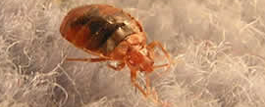
Bed bugs are small crawling insects with a flat oval shape about the size of an apple pip.Their flattened body allows them to squeeze into small cracks and crevices and as a result they are hard to detect and eradicate. They are blood-sucking insects that require blood for nutrition and development.
Exopest is a specialist Company using new technology and a systematic approach to eradicate your bedbug problem – we can arrange an inspection and treatment today – call 1800 686 299 or send us an email now
Bed bugs feed mostly at night when their host is asleep. Bites cause small, hard, swollen welts on the skin that may become inflamed and itch severely.There are five juvenile stages leading to the adult bed bug. Adults are about 6mm long, reddish-brown in colour with the juveniles (nymphs) a similar shape but lighter in colour and smaller. Eggs are about 1 mm in length, white to cream coloured and under magnification pear-shaped. They are well concealed and not always obvious.
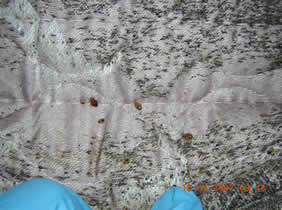
Bed Bugs On Mattress

Bed Bug Life Cycle
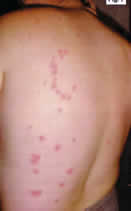
Bed Bug Bites
Typical hiding places are in tufts, folds and seams of the mattress and base; cracks in timber bed framing and mattress slats and around the bed head. Harbourage is not limited to these areas and in all cases cracks and crevices in other areas need to be inspected. Including: carpet edges, picture frames, curtain folds, electrical fittings, wardrobes and any area into which bed bugs can squeeze.
The cryptic nature of bed bugs and their ability to hide in small inaccessible spaces means that they will be protected from pesticides unless applied thoroughly and correctly. Eggs are not affected by pesticides. Both characteristics have significant implications for treatment.
The most commonly affected areas of the body are the arms and shoulders. Reactions to the bites may be delayed; up to 9 days before lesions appear. Common allergic reactions include the development of large wheals, often >1cm, which are accompanied by itching and inflammation.
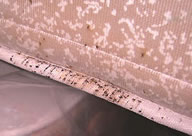
Bedbug Spotting
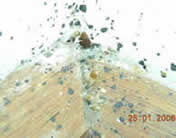
Bedbugs
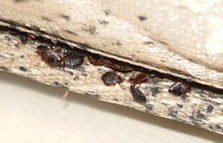
Bedbugs In Mattress Seam
The essential first step in Bed Bug management is an inspection & insect identification – determining the extent and level of infestation. (Sometimes the insect in question is not a bed bug, but another biting insect like bird mites or fleas.) Site inspection is crucial. When this is known the Exopest technician can assess the treatment options and time needed for treatment.
After inspection in extreme cases, it may be better to discard the mattress and bed base – again ensuring that other items do not become infested. Care must be taken when moving affected items, sealing them in plastic bags before they leave the room is recommended. Bed linen should be washed in hot water followed by a hot drier. Sensitive materials can be placed in a freezer allowing enough time for the entire volume of the item to reach the temperature of the freezer.
Treatment involves the direct application of a registered product to insect harbourages such as bed base, bed slats, carpet edges, tack board below carpet , cracks & crevices, wardrobes, and cupboards etc.
The room should ideally be quarantined for 7-10 days until a follow up inspection could declare the infestation dead. Reapplication would be necessary if live bedbugs were found on this visit and a further 7-10days quarantine of those rooms and a final follow up inspection. There is no warranty with Bed Bug treatments.
Steam – is an interesting treatment option and we are currently researching the use of a non-chemical Bed Bug treatment using Steam. Bed Bugs are very sensitive to heat – whether extreme cold or extreme heat. Dry vapour steam at over 120 degrees Celsius instantly kills all adults, larvae and eggs and leaves no residual. Very safe to use and very effective. Steam can also be directly applied to mattress seams and edges – the very place the insects hide.
IT IS HIGHLY UNLIKELY A QUICK CHEAP CHEMICAL TREATMENT WILL BE SUCCESSFUL – DON’T WASTE YOUR MONEY AND RISK BEING FURTHER DISTRESSED BY ACCEPTING “CHEAP” REMEDIES.
Inspection and thorough treatment are required to control bed bugs.
Domestic situations: we suggest if you are traveling frequently then check the mattress in your Hotel room regularly or invest in a mattress cover, which will help eliminate the most common harbourage sites.